Track Categories
The track category is the heading under which your abstract will be reviewed and later published in the conference printed matters if accepted. During the submission process, you will be asked to select one track category for your abstract.
Nanomaterials are materials of which a solitary unit is estimated between 1 to 100 nm. Nanomedicine is the exponentially developing in the most recent decades. An utilization of nanotechnology to wellbeing is the fundamental idea of Nanomedicine. Multifunctional BioNanomaterials have been producing for applications like medication conveyance, biosensing, and bioengineering. Nanoparticles which have one of a kind properties that make them valuable in natural applications like Drug Delivery, Regenerative Medicine are called as Bio-Nanomaterials. These materials are investigating for different biomedical applications like tissue building, and biosensors. The necessity of size and biocompatibility made scientists to investigate increasingly about Bionanomaterials for growing progressively interesting utilitarian properties to utilize them in biomedical applications. There are various kinds of Bionanomaterials like Metal Based Bionanomaterials, Metal Oxide-Based Bio-Nanomaterials, and Semiconductor-Based Bionanomaterials.
Biomaterials-be it natural or synthetic, alive or lifeless, are those materials that are made up of multiple components and have the capability to interact with biological systems. Biomaterials are generally used in medical applications to augment or replace a natural function. The most commonly used biomaterials are polymers. All biomaterials meet certain criteria and regulatory requirements before they are assured for use in medical applications. Biomaterial Science has a broad scope that covers the fundamental science of biomaterials through to their biomedical applications.

- Track 2-1Advanced hydrogels
- Track 2-2Biofunctional hydrogels
- Track 2-3Injectable Matrices
- Track 2-4Polymers as Biomaterials
- Track 2-5Biomimetic Biomaterials
- Track 2-6Degradable and Resorbable Biomaterials
- Track 2-7Adsorbed Protein on Biomaterials
Tissue engineering is best defined as the use of a combination of cells, engineering materials, and suitable biochemical factors to improve or replace biological functions. Tissue engineering uses sets of methods that helps to replace or repair damaged or diseased tissues with natural, synthetic, or semisynthetic tissue mimics. These mimics can either be fully functional or will grow into the required functionality.

- Track 3-1Cell isolation
- Track 3-2Cell seeding
- Track 3-3Scaffolds for Tissue Engineering
- Track 3-4In vitro culturing
- Track 3-5Cell harvesting
Biomedical engineering is also known as a bioengineering. This field is the bridge between medical and engineering, combining the problem solving and designing skills of engineering with medical biological sciences to advance health care treatment, therapy and including diagnosis. It is the application of engineering principles and design concepts to biology and medicine for healthcare purpose.
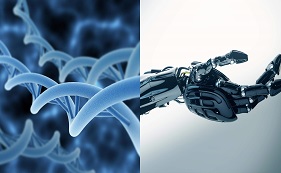
- Track 4-1Biomechanics
- Track 4-2Biomedical optics
- Track 4-3Molecular and Cellular Engineering
- Track 4-4Genetic engineering
- Track 4-5Neural engineering
- Track 4-6Pharmaceutical engineering
Bone and ligament both are the most critical segments in the skeleton framework, giving the significant structure of the assortment of vertebrates and giving protection to delicate tissues. Tissue building of musculoskeletal tissues, particularly bone and ligament, is a quickly creating field. In bone, innovation has focused on bone unite substitute materials and the improvement of biodegradable frameworks. As of now tissue building systems have included cell and quality treatment. The accessibility of development factors and the growing learning base concerning the hereditary qualities and direction of bone arrangement have grown new materials for tissue-building applications.
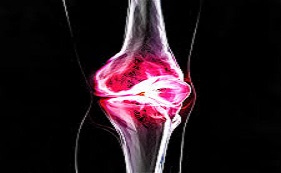
- Track 5-1Bone Grafting
- Track 5-2Mechanical Stimulation- Bone Regeneration
- Track 5-3Bone Tissue Engineering
- Track 5-4Bone Scaffolds
Grafting is a surgical procedure to move tissue from one site to another on the body, or from another creature, without bringing its own blood supply with it. Instead, a new blood supply grows in after it is placed. Different types of grafting contains skin grafting, bone grafting, vascular grafting and ligament repair. Skin grafting is most common used grafting technique. Wounds, burns and scars have been dealt with this efficiently. Bone transplantation is a bit difficult but well-known process to replace damaged bones. In Recent years cardiovascular disease are being combatted with the development of a tissue-engineered vascular graft (TEVG). The various approaches to generate TEVGs are scaffold-based methods and tissue self-assembly processes. The channels for vascular grafting are autologous arteries or veins. Synthetic vascular grafts are also available in the market nowadays.

- Track 6-1Wound healing and repair
- Track 6-2Cartilage replacement
- Track 6-3Bone replacement
- Track 6-4Hip replacement
Regenerative medicines tries to supplant tissue or organs that have been harmed by disease , congential issues,or trauma versus the current clinical system that spotlights essentially on treating the manifestations. The tools used to understand these results are tissue designing, cell treatments, and therapeutic devices and artificial organs.
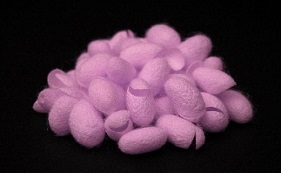
- Track 7-1Cellular Therapies
- Track 7-2Organ Transplantation
- Track 7-3Clinical Translation
- Track 7-4Periodontal Therapy
- Track 7-5Innovations Regenerative and Tissue Engineering
- Track 7-6Medical Devices And Artificial Organs
- Track 7-7Regenerative Medicine Approach
An organ-on-a-chip (OOC) is a multi-channel 3-D microfluidic cell culture chip that simulates the activities, mechanics and physiological response of entire organs and organ systems, a type of artificial organ.
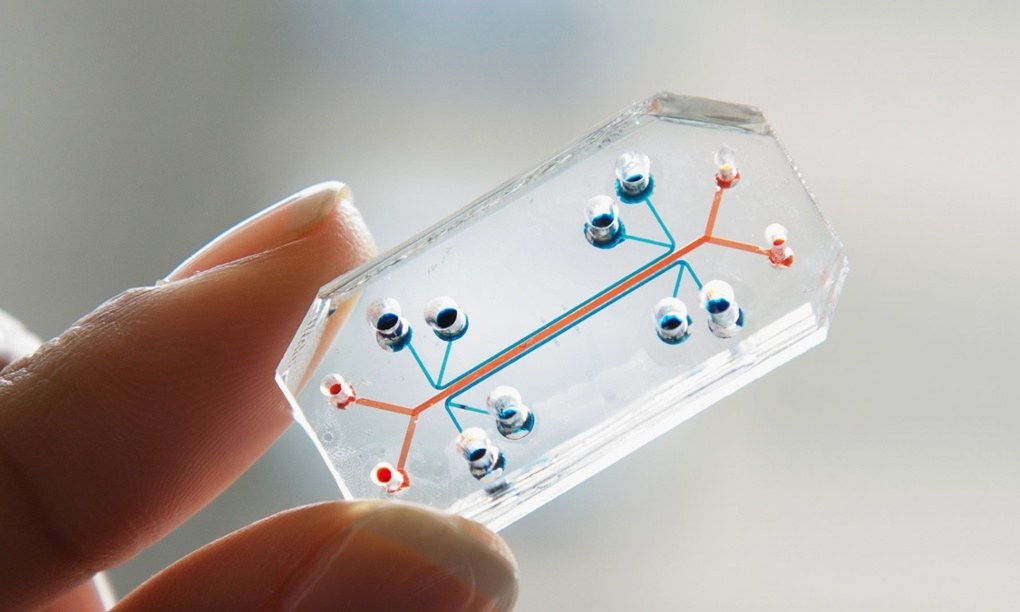
- Track 8-1Liver-on-a-Chip for Toxicity Screening/Toxicology Studies
- Track 8-2Lung-on-a-Chip
- Track 8-3Microfluidics/Lab-on-a-Chip
- Track 8-4Nerve-on-a-Chip
- Track 8-5Cancer-on-a-Chip
- Track 8-6Gut-on-a-Chip
- Track 8-7Immune System-on-a-Chip
- Track 8-8Organ-on-a-Chip Applications for Drug Discovery
- Track 8-9Modeling Diseases-on-a-Chip
Biofabrication research leads to the fabrication of advanced biological models, non-medical biological systems and medical therapeutic products. It is an automated production of organs and tissue that deals with health challenge in medicine. Biofabrication technology is a platform for a broad range of tissues such as nervous, cartilage, blood vessels and skin, as well as complete organs such as kidney, liver and the heart. It is used for 3D printing which is also known as the theory of additive manufacturing. Its main objective is to merge cells and fibres into an independent construct that can substitute wounded tissue.

- Track 9-1Biochemical signaling
- Track 9-2Additive manufacturing technologies
- Track 9-3Limits of bone bio fabrication
- Track 9-4Clinical translation
- Track 9-5Stereo lithographic process
- Track 9-6Laser sinterings
- Track 9-7Biofabrication of Bone Tissue Engineering
3D Bioprinting is the way toward making three-dimensional structure of biomaterials by meusing computer conrol. As for the nano-scale measurements the biomaterials are arranged into three sorts as-Nano-molecule (3D), Nano-fiber(2D) and Nano-sheet (1D). 3D bioprinting is the arrangement of various cell designs by utilizing printing strategies alongside the layer-by-layer technique to create tissue mimetic structures with no damage in cell work that can be additionally utilized as a part of tissue building. Electrospinning innovation implies deposition of polymer nanofibers on an object by utilizing high voltage to a fluid polymer arrangement. Bioprinting helps in the examination of medications and pills by printing tissues and organs. It is likewise utilized for smaller scale device and microarrays.
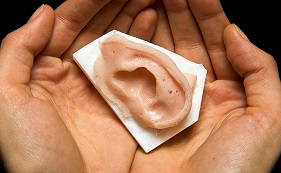
- Track 10-1Layer-by-layer: 1, 2 and 3D nano assembly in 3D bio-printing
- Track 10-2Electrospinning and allied technologies
- Track 10-3High-energy handling of biomaterials
- Track 10-4Hierarchical three dimensional structures
- Track 10-5Use in micro devices and microarrays
- Track 10-6Combinatorial approaches to biomaterial design
Dental Biomaterials incorporate both the utilization of regular and manufactured dental tissues like veneer, cementum, dentin and polymers, composites, ceramics. Dental bio materials are utilized to repair decayed teeth. These biomaterials are of various kinds i.e. orthodontics, supports, inserts, and so forth. Orthodontics is a piece of dentistry that prompts the arrangement of teeth and jaws to enhance oral wellbeing. Props are principally utilized as a part of orthodontics to fix teeth and to treat anomalies in teeth. Dental inserts are the barrel shaped structures made up of titanium, which is utilized as a substitute for any missing teeth. Prosthesis implies a device intended to supplant a missing piece of the body Diseased or missing eyes, arms, hands, legs, or joints are supplanted by utilizing prosthetic devices. False teeth are known as dental prostheses.

- Track 11-1Implants and prosthesis
- Track 11-2Orthodontics: Braces
- Track 11-3Advanced surgeries and complex cases
- Track 11-4Restorative implants
- Track 11-5Orthodontics and craniofacial research
- Track 11-6Implant surgery
Polymers are the macromolecules accomplished from different rehashed subunits. Polymers are utilized as biomaterials and that can be of the accompanying sorts, i.e., Natural Polymers: Chitosan, Collagen, Alginate. These characteristic polymers are utilized for sedate conveyance, wound dressing and tissue designing. Engineered Polymers like Polyvinylchloride (PVC),Polypropylene, Polymethyl methacrylate are utilized as a part of inserts, therapeutic expendable supplies, dressings, and so on. Biodegradable Biomaterials: Polyactide, Polyglycolide, and so on. It is profitable as it recovers tissue and does not leave remaining follows on implantation. For the most part utilized for tissue screws, ligament repair and medication conveyance frameworks. Biopolymers are those which are built up from the living life form example DNA, RNA, proteins, sugars, and so on. It can likewise be utilized as packaging material. Polymer composites are broadly utilized for preparing medical implants.
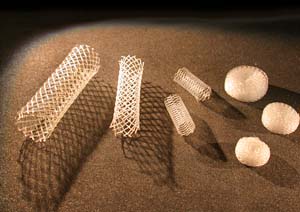
- Track 12-1Biodegradable polymers as Biomaterials
- Track 12-2Implanted polymer composites
- Track 12-3Polymers as Biomaterials
- Track 12-4Biopolymers for food packaging
- Track 12-5Micro and nano blends based on natural polymers
Tissue engineering along with regenerative medicine can be used to create ‘Scaffolds’ in the human body which are used to support organs and organ systems that may have been damaged due to an injury or disease. Fundamentally, this process involves the in vitro construction of a patch (or a graft). This patch is made from a combination of stem cells and an artificial extracellular matrix (biomaterial). The engineered patch can then be surgically implanted into affected areas of the body that need reconstruction.
Scaffolds must be capable of performing the following functions:
-
Allow cell attachment and migration
-
Deliver and retain cells and biochemical factors
-
Enable diffusion of vital cell nutrients and expressed products
-
Exert certain mechanical and biological influences to modify the behaviour of the cell phase
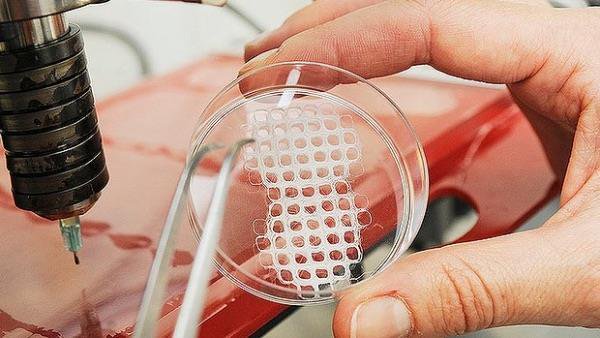
Aging is the successive or dynamic change in a living being that prompts to an increased risk of debility, disease, and death. Skin loses its juvenile luster with age. Permanent pimples, wrinkles and texture irregularities are very common. With advent of cosmetic surgery this can be reversed. The process is generally based on layer by layer removal of the surface cells and the new cells are thus formed.
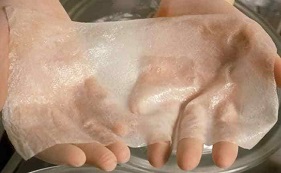
A Bioartificial organ is a designed device or tissue which is consolidated into human body to supplant a characteristic organ .It joins biomaterials and natural cells for completely substitution of patient disappointment organs. Example of bioartificial organ are bioartificial kidney device, joining biomaterials and kidney epithelial cells for enhanced blood detoxification, bioartificial pancreas device, consolidating exemplification of pancreatic cells for treatment of diabetes, bioartificial lungs for considering lung recovery.
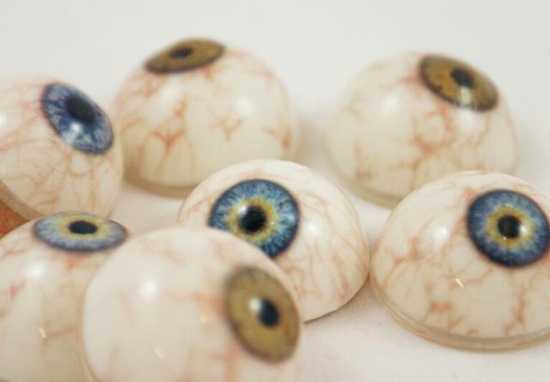
- Track 15-1prosthetic Cardiac Valves
- Track 15-2Artificial Lung (oxygenator)
- Track 15-3Bio Artificial Windpipe
- Track 15-4Artificial Kidney (Dialyser membrane)
Tissue Regeneration implies regrowing or reestablishing the harmed or missing organ part from the rest of the tissue. Numerous embryonic tissues, for example, the spinal cord, heart, and limbs, have some regenerative potential and may use systems that can be exogenously initiated in adult tissues. By utilizing smaller molecular and cell pathways embryonic improvement can be restated by utilizing Tissue Regeneration.

- Track 16-1Tissue Biomarkers
- Track 16-2Cellular & Molecular mechanisms
- Track 16-3Translational Diagnostics
- Track 16-4Connective Tissue Deposition
- Track 16-5Advancements in Biomedical & Tissue Engineering Techniques
Stem cell therapy is developing fast in the field of biomaterials. Combining stem cells with biomaterial scaffolds provides a promising response in engineering tissues and cellular delivery. Recent stem cell technologies have opened several ways for biomaterial research, such as developing disease models, drug development, tissue regeneration and development of functional organoids. The process also aim for development of adult stem cell-based tissue engineered biomaterial implants and organoids. This technique develops the cells to generate and use induced Pluripotent cells (iPS) from differentiated cells.
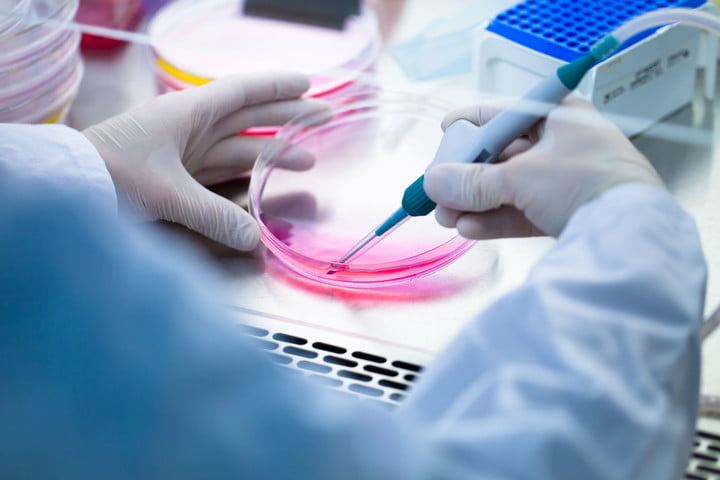
- Track 17-1Sources Of Stem Cells
- Track 17-2Hard Tissue Repairs and Stem Cells
- Track 17-3Orthopedic Repairs and Stem Cells
- Track 17-4Medical Devices and Artificial Organs
- Track 17-5Organ Transplantation and Its New Techniques
- Track 17-6Synthetic Polymers
- Track 17-7Embryonic stem cells
- Track 17-8Treatment of Diseases
Soft tissue inserts applications include building standards, the execution of an embedded device inside the host which principally relies on both the sort of materials utilized and the manufactured outline of the device or embed. The underlying determination of material ought to be founded on sound materials designing practice and additionally prerequisites. The final material Selection judgment on the appropriateness of a material relies on in-vivo clinical execution perception of the embed for particular time span. The necessity of in-vivo perception speaks to significant issues in the choice of proper materials for use inside human body, the execution of an embed which may rely upon the manufacture plan instead of the materials, expertise of the specialists and the earlier state of patients.

- Track 18-1Cellular Interaction of Biomaterials
- Track 18-2Growth and Differentiation Factors
- Track 18-3Biomimetics
- Track 18-4Scaffold Product
- Track 18-5Biological Active Molecules
The current combination of developing nanotechnology into tissue science and biomedicine has achieved an extent of creative nano building endeavors for the repair and recovery of tissues and organs. Nano patterns alone can direct the differentiation of stem cells without involvement of exogenous soluble biochemical factors. This control of cell conduct by nanotechnology in tissue engineering is one of the case exhibiting the huge utilizations of nanotechnology in biomedicine.
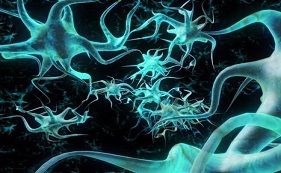
- Track 19-1Effects of Guided Tissue Regeneration
- Track 19-2Nano Drug Delivery Systems
- Track 19-3Nanotechnology in Regeneration of Complex Tissues
- Track 19-4Molecular Nanotechnology- Medical Applications
Implant or Implantation refers to insertion of biological material into the body for diagnosis or therapies. Biomaterial is generally used in dental Implants. There are different classification of dental implants they are based on Surface of implant, Implant design, the Type of material used and Attachment mechanism.
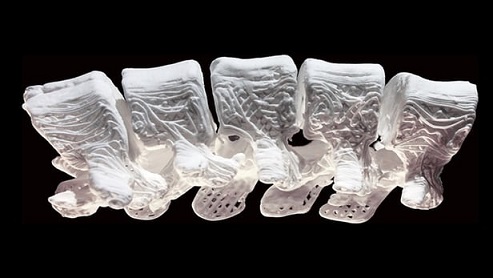
- Track 20-1Metallic Implants
- Track 20-2Ceramic Implants
- Track 20-3Polymeric Implant
- Track 20-4Dental Implants
- Track 20-5Breast Implants
Cancer is the most dreaded disorder. The exact cause and mechanism is yet not known. Diverse research is going on find an answer. Tissue engineering has been inter-related with cancer to find some ways. Using tissue engineering to comprehend cancer can be done by fabricating 3D constructs that will mimic tumor cells and help us know how cancer cell grow, spread and metastasize at the biological level. For testing drugs, 3D structures are more reliable. One approach has been to engineer tumors and understand mechanism of drugs administered on then in vitro. Tissue engineered cancer models can be used as test therapies.
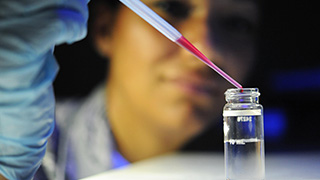
- Track 22-1Tissue Engineering Platform For Cancer Research
- Track 22-2Tumor Cell interaction with Bone
- Track 22-3Drug Delivery with Tissue Engineering Techniques
- Track 22-4Newly detected Cell types with a potential for Tissue Engineering and Cancer Research.
Biomaterials plays an important role in delivery systems mainly in drug delivery. Numerous kinds of drug delivery systems, surgical implants, wound closure devices, artificial organs are usually dependent on biomaterials. Biomaterials are helpful in gene delivery that in due course make transgene expression and tissue growth along with regeneration of tissues. Immunomodulation i.e., modulating or altering several features of immune system, the power and competence of regenerative medicine therapies can be enlarged. At present, hydrogels are termed as the smart drug delivery system, that are often used as sustained drug release systems, which has importance in the healing of cancer. Extracellular media or vesicles are used for the macromolecular drug delivery. Biomaterials can also be used for islet delivery, for imaging, etc.
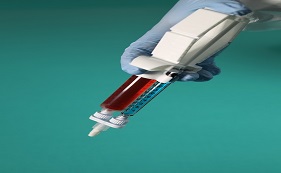
- Track 23-1For islet delivery
- Track 23-2In gene therapy
- Track 23-3Polymeric hydrogels for drug delivery
- Track 23-4Extracellular media for therapeutic delivery
- Track 23-5Tissue targeting nanoparticles
- Track 23-6Drug-processing devices
- Track 23-7Theranostic delivery
- Track 23-8RNAi-enabled biomaterials
- Track 23-9Immunomodulation in regenerative medicine
Biophotonics is the investigation of optical procedures in human organic frameworks, which happens normally and in bioengineered or biosynthesized materials.. The imperative element of this field is imaging and recognizing cells and tissue. It likewise includes infusing fluorescent markers into an organic framework to track cell elements and medication conveyance. Biophotonics is correspondingly used to examine organic materials or materials with resources like natural material, i.e., scrambling material, on a tiny or plainly visible scale. On the minute scale basic applications include microscopy and optical intelligence tomography. On the plainly visible scale, the light is diffuse and applications regularly manage diffuse optical imaging and tomography. Biomedical optics emphasizes on the outline and utilization of cutting edge optical procedures to determine issues in drug and science.

- Track 24-1Clinical and Biomedical Spectroscopy and Imaging
- Track 24-2Optical Coherence Tomography and Coherence Techniques
- Track 24-3Photonic Therapeutics and Diagnostics
- Track 24-4Medical Laser Applications and Laser-Tissue Interactions
- Track 24-5Biomedical Spectroscopy, Microscopy, and Imaging
- Track 24-6Clinical and Biomedical Spectroscopy and Imaging
- Track 24-7Tissue Optics, Laser-Tissue Interaction, and Tissue Engineering
- Track 24-8Nanophotonics
- Track 24-9Neurophotonics, Neurosurgery, and Optogenetics
- Track 24-10Bioluminescense
- Track 24-11Optical Trapping Applications
- Track 24-12Bio-Optics: Design and Application
Late advances applying mammalian tissue building to in vitro plant cell culture have effectively refined single plant cells in a 3D microstructure, prompting the revelation of plant cell practices that were already not visualized. Creature and plant cells share various properties that depend on a various levelled microenvironment for making complex tissues. Both mammalian tissue designing and 3D plant culture utilize customized frameworks that adjust a cell's conduct from the underlying culture utilized for seeding. For people, these methods are altering human services systems, especially in regenerative medication and malignancy thinks about. For plants, we foresee applications both in principal research to contemplate morphogenesis and for engineered science in the agri-biotech division.
